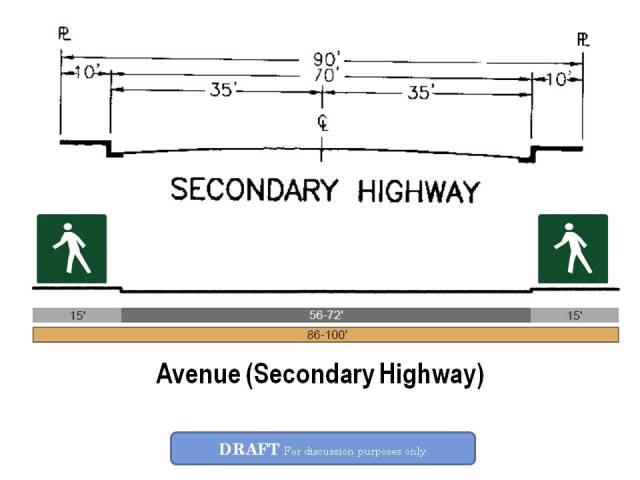Whether walking to the car, bike or bus stop, every trip begins and ends with walking. Acknowledging this, Los Angeles is attempting to shed its reputation as an auto-oriented city to a multi-modal one. Los Angeles celebrated many great strides in 2012 towards improving walkability in the city, including the appointment of two pedestrian coordinators at the Department of Transportation. The recent announcement of the continental crosswalks program is a direct implementation commitment made by the City to improve pedestrian safety. On the advocacy side, Los Angeles Walks, a non-profit organization committed to promoting walking and pedestrian infrastructure, officially re-launched with a new steering committee (check out the organization’s list of top pedestrian achievements in 2012).
These changes signal a stronger commitment by the City and its residents to improve safety for pedestrians and to make walking a more accessible and pleasant transportation option. The City acknowledges that walking in Los Angeles can be dangerous. Recent coverage by the L.A. Weekly on hit-and-run incidents and LA Streetsblog underscores the dangerous conditions faced by pedestrians and other roadway users, and collision data provide more evidence. According to the California Highway Patrol’s 2010 Annual Report of Fatal and Injury Motor Vehicle Traffic Collisions, there were 219 fatal collisions in 2010 in Los Angeles. Of these collisions, 100 (46%) involved pedestrians. Our previous post on safety and collisions gives a ten year overview of pedestrian-related collision rates across the city.
The conditions of our streets that impact pedestrians often discourage people from walking, which in turn discourages transit use and limits opportunities for active transportation. The Federal Highway Administration’s 2010 Conditions and Performance Report found that, nationally, barriers to walking included the perception of too much traffic, not enough street lighting, wide road crossings, as well as concerns regarding crime, the lack of pedestrian infrastructure, or the lack of time. As a citywide policy document, the update of the Mobility Element provides a unique opportunity to put in place new rules and tools to address the aforementioned barriers to improve the walking experience.
The Private and Public Realms
In urban planning and design, space is generally considered in two realms: the public and private. The public realm refers to places that are publicly-owned or accessible, such as streets, parks, plazas, and alleys. This includes privately-owned spaces that are open for public use. The private realm refers to places that limit or prohibit general public access.
The rules that govern the design of the public realm as well as the transitions between the two realms are crucial for a safe and pleasant walking experience. The City influences the design and development of both realms, but has made more progress in standardizing the integration of active transportation components into the design and building of the private realm. The City Planning Commission adopted the Walkability Checklist (2007) and Citywide Urban Design Guidelines (2011) to provide guidance to developers to create more livable, walkable spaces within the private realm and improve transitions between the private and public realms.
Most of the public realm falls under the responsibility of the City; in the past, the focus of the design and development in the public realm, namely our streets, has lacked the details necessary to effectuate a more pleasant experience for active transportation users. The City made progress for bicycle users in adopting the Technical Design Handbook as part of the 2010 Bicycle Plan. However, the City currently does not have a technical design handbook equivalent for people who walk.
The Mobility Element update is taking a serious look at improving pedestrian conditions within the public realm. One new policy we are examining is increasing the citywide minimum sidewalk width on arterials from 10 to 15 feet, which will provide safer spaces for walking on our streets. The City’s current Standard Street Dimensions, last adopted in 1999 and 1969 prior to that, holds the right-of-way for pedestrians to 10 feet on our arterial streets (see page 2, footnote 4). The Model Design Manual for Living Streets recommends a minimum width from 12 to 14 feet in mid- to high-density residential, general commercial and mixed use districts, while calling for 16 foot sidewalks in transit-oriented districts. Raising the minimum sidewalk width requirement across the board on arterial streets will not only give more room for walkers, but also allow ample space for pedestrian furniture, trees and other landscaping features. These improvements can increase the physical and psychological comfort for walkers as well as travelers of other modes.
Pedestrian Enhancements versus Pedestrian-Enhanced Network
You may be wondering why we are addressing pedestrian enhancements without talking about a Pedestrian-Enhanced Network. We are pursuing pedestrian improvements citywide rather than a network of enhancements because pedestrians will be better served through more ubiquitous improvements rather than a network on certain, select streets that are enhanced for walking. Also, the network concept works well for other modes that are used to make longer trips than those that are typically made on foot. The needs of walkers and sidewalk users have been integrated into the different components of the Complete Streets Networks (enhancements for transit will and must include enhancements for pedestrians), as well as in our policy language. Some sample draft policies that address walking in the Mobility Element include:
– considering the safety of school children as a priority over vehicular movement on all streets regardless of highway classifications, especially near schools;
– prioritizing the implementation of bicycling and pedestrian safety improvements around community facilities and locations with a strong presence of pedestrians;
– improving walking conditions and safety on all public rights-of-way; and
– considering walking as a component of all other transportation modes and ensure high-quality pedestrian access in all site planning and public roadway improvements.
Through policy interventions and subsequent improvements in regulating the design of the public realm, Los Angeles can move forward to becoming a more multi-modal city that offers safe and comfortable transportation choices for all Angelenos.
What are your thoughts about pedestrian enhancements in Los Angeles? Give us your feedback here, or on our Online Town Hall, ideas.la2b.org.






Change the roadwways all you want but anyone who has lived/worked in NYC or other real Cities know that it ain’t the roads but the parking that is important to “pedestrian” movements…no one uses a car in NYC as you may have a home parking space but there ain’t any for your destination parking…drivers are not for your limo driving but they know where they can sit and park/stop then pick you up…or you learn the buses/subways reeal quick.
I can get all day parking for $4 and take the DASH anywhere downtown and look at all the ground level parking throughout I-10 / I-110 / I-5 area = loss of property taxes and development and increase traffic along the major corridors to the east
GET RID OF DOWNTOWN DESTINATION PARKING = ADD DESTINATION PRICING RATHER THAN CONGESTION PRICING – THEN WE CAN DEAL WITH ORIGIN PRICING.
Try making 2hr curb parking free and add all-day parking space fee of $15-25/space-day = most will go to buses and metro = MORE PEDESTRIAN DOMINATED TRANSPORT – MORE PASSENGER MILE PER VEHICLE MILE.
Pingback: Complete Streets Networks, Part 4: Meet Our Draft Bicycle-Enhanced Network | LA/2B
The outdoor public stairways between LA’s streets are an undervalued part of the pedestrian environment. A whole new pedestrian sport is rapidly growing there under the aegis of several leaders, including Dan Koeppel (the annual BIG Parade) and author Bob Inman. The above website documents how last year the latter led my wife and me on the first ever bakpacking tour of most (we missed a couple that we didn’t yet know about) of such staircases in a continuous 10-day push, almost 200 miles of it on foot. (Some bus rides helped in stairless sections of LA.)
Below are 3 more links about the trek, including a whole book available free online (misleading labelled a “preview”). While obviously this is the extreme fringe of the new sport, it teaches what LA must do to truly become pedestrian friendly.
http://www.blurb.com/bookstore/detail/3580678
http://www.kcet.org/socal/socal_wanderer/guides/hiking-los-angeles-september-2012-guide.html
http://www.kcet.org/socal/socal_wanderer/outdoors/secret-stairs-los-angeles-video.html
I agree that LA’s public stairways are an underutilized resource. In Eagle Rock one particularly convenient stairway was closed to the public at the request of adjacent neighbors. The stairway runs between York Hill Place and Banbury Place and it’d be great to see it, along all other public stairways, be open and maintained.
I would also suggest, in commercial districts, don’t be afraid have the walk signal for pedestrians change automatically. In my part of LA, York Boulevard would be perfect for such a change since there’s a growing night-life scene, and generally the street (specifically between Avenue 50 and 54) is more vibrant. Automatic pedestrian cycles would go a long way to make a statement that Los Angeles values and respects pedestrians.
Continental crosswalks are very clean and attractive– I would love to see more of them.
Protected midblock crossings, not mentioned in this post, would also be nice to see in areas with heavy pedestrian traffic.
I’d like to clarify that by protected midblock crossing I mean a mid-block crossing that features a median refuge
I second the upkeep of Los Angeles’s stair network. A really undervalued network that has not seen a lot of upkeep in recent years. It may not be the highest of priorities, but it couldn’t hurt to include in your report.
Pingback: Task Force Meeting Update | LA/2B